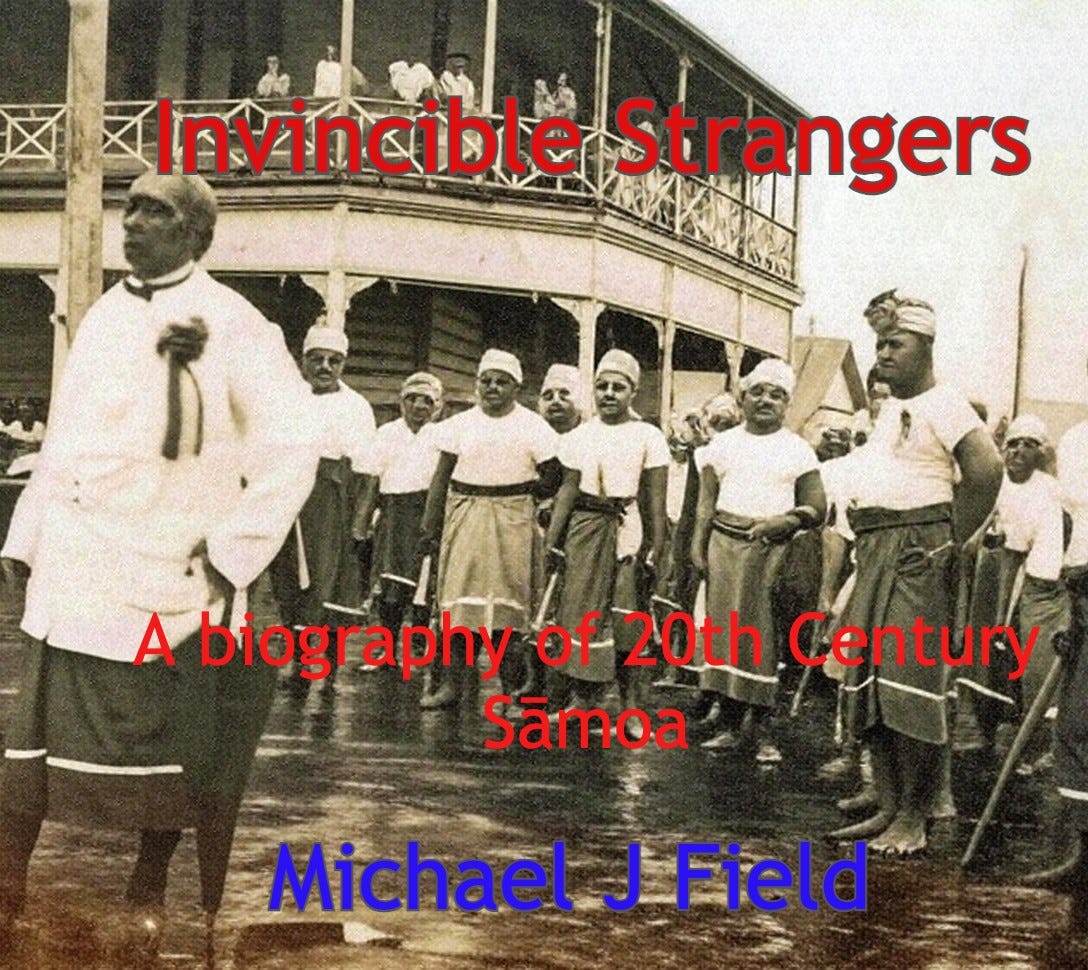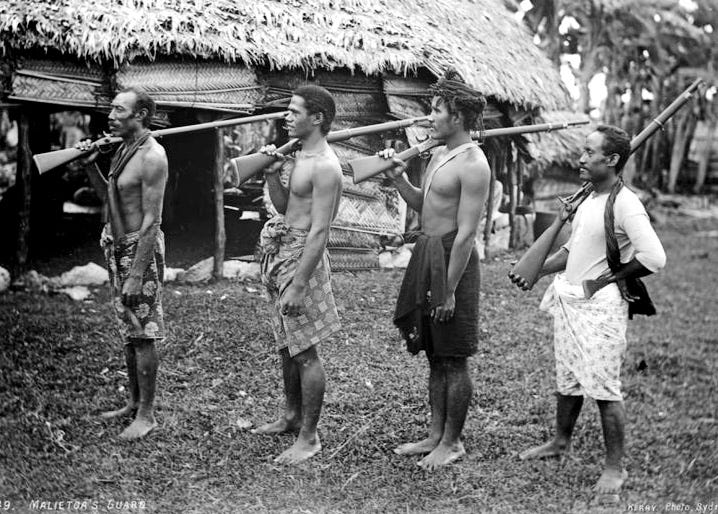Not a party, call it ‘Sāmoa in unity’
Invincible Strangers 13 Chapter 3.3
Not a party, call it ‘Sāmoa in unity’
As this madness continued, others beyond Sāmoa began to believe it was not worth the coin.
Berlin, London and Washington decided a trilateral commission would be sent to work out the future of the islands. This did not include Sāmoans ruling themselves. News arrived on 21 April that there was to be a ceasefire. Ross was grumpy saying the rebels were about to be thoroughly whipped: ‘In another week or ten days the Americans and the British would have solved the difficulty, the rightful King would have been secure on the throne, the Supreme Court and the Berlin Treaty upheld, and the peace of Samoa practically assured for many years to come.’ The British and Americans were angered that a commission ordered truce was in effect. They believed the Matā’afa forces lacked discipline and could be conquered easily by the newly trained Malietoa forces.
Ahead of the arrival of the commission, Matā’afa moved his forces closer to Āpia. A line of forts around five kilometres long were built, offering strong protection.
‘The Matā’afa forts, which have been held by the rebels for so long, are of great strength, and seem as if built under European supervision,’ Fred Carr Rollett of the New Zealand Herald reported, repeating the canard that Sāmoans were incapable of defence without foreign help. ‘They are built of loss blocks of lava backed with earth in places and topped with the trunks of trees. They average between 4ft and 6ft in height and between 3ft and 5 ft in thickness. In every place they could successfully resist rifle fire, or the fire of our field guns.’
On 13 May USS Badger sailed into Āpia. An unprepossessing converted merchant ship, the first US naval vessel named after a burrowing mammal, she carried the members of the trilateral commission.
‘The sun was just emerging from the eastern sea, its rays were just lighting up the green summits of the island mountains in front of us,’ the American commission member, Bartlett Tripp said. ‘The sea was calm and quiet, save that continuous billowy motion, that restless swell which never ceases and which is ever reminding you of that terrible reserve force it can bring into action when it desires.’
Keep reading with a 7-day free trial
Subscribe to Michael Field's South Pacific Tides to keep reading this post and get 7 days of free access to the full post archives.



